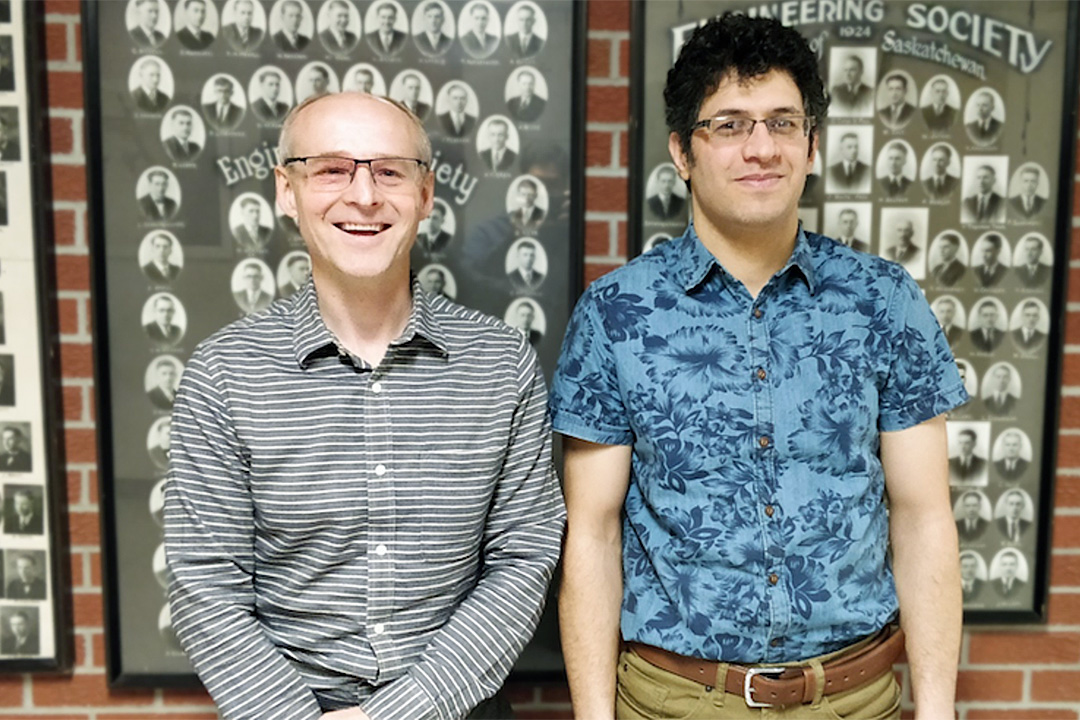
USask-led novel heating and cooling control system provides year-round home
SASKATOON – A University of Saskatchewan (USask) research team and industry partner are working to develop an affordable solution to a problem affecting many Canadians—home heating, ventilating and air conditioning systems (HVAC) that leave basements and upper-floor rooms too cool or hot.
USask post-doctoral fellow Farid Bahiraei is working with mechanical engineering professor Dr. Carey Simonson (PhD) and industry partner Soheil Akbari of SenergyK Innovative Creations (SIC) in Saskatoon to develop a novel climate control technology (uctupus.ca) that will enable people to control the temperature in individual rooms or zones in a home, increasing their comfort and even saving money.
“To keep costs low, current forced air HVAC systems in homes are designed to treat the house as a single zone, distributing air through ducts to all rooms through a furnace that is controlled by a single thermostat,” said Simonson. “With this system, you cannot actively and independently control the temperature in each room.”
The team aims to develop a cost-effective energy management system that will improve comfort by distributing air to maintain room temperature at a level its occupant wants, without requiring any modifications to a home’s ducting system or replacing the furnace. At an anticipated all-in cost of around $1,500, it also will be an affordable fix to a common problem.
Last year, Bahiraei was awarded a Mitacs Accelerate internship to support the project. Mitacs and Akbari’s company evenly shared the cost of Bahiraei’s $30,000 internship, and Akbari is applying for another 12-month internship for Bahiraei. Mitacs is a publicly funded not-for-profit research and training organization that supports collaborations between industry, academia and governments in Canada.
The idea for the technology came from Akbari, who received his master’s degree in mechanical engineering from USask under Simonson’s supervision in 2012.
To enable temperature control in each zone, the team is developing remotely controllable vents that can adjust airflow to each room at the command of a central controlling device (CCD) that follow instructions from the home occupant.
A sensor plugged into an electrical outlet in each room or zone will report temperature, humidity, motion, sound and light to the CCD every few seconds. The central device optimizes the furnace airflow distribution by adjusting vents as needed to maintain the desired room climate.
Bahiraei helped develop the algorithm that enables the central control system to “learn” the thermal characteristics of the home and operate the vents as needed to maintain the temperature of specific zones.
Preliminary results have been promising. Akbari said the team will be working out some technical and hardware challenges over the next few months and will finalize a beta version to install in a few buildings for testing. Akbari hopes to attract investments to achieve the company’s mass production and marketing plans for early 2020.
Bahiraei said the Mitacs internship has enabled him to gain real world experience in thermal management design and optimization.
“It was a very successful experience. It provided me the opportunity to work with an industrial client and focus on a real-world problem,” he said. “As a student and researcher, I have been working at universities. How people communicate in industry is different, and this internship helped me develop those communication skills.”
The project was among five chosen by Saskatchewan technology incubator co.labs from among 38 innovative projects submitted to its co.launch competition by Saskatchewan entrepreneurs, and was provided space at the agency’s Innovation Place facilities to advance the research.
The integrated hardware and software technology being developed is unique and will have global appeal, Akbari said. He hopes the technology will find applications in HVAC retrofits of commercial and industrial buildings, as well as in net zero energy buildings in the near future.
For more information, contact:
Jennifer Thoma
Media Relations Specialist
University of Saskatchewan
306-966-1851
jennifer.thoma@usask.ca

